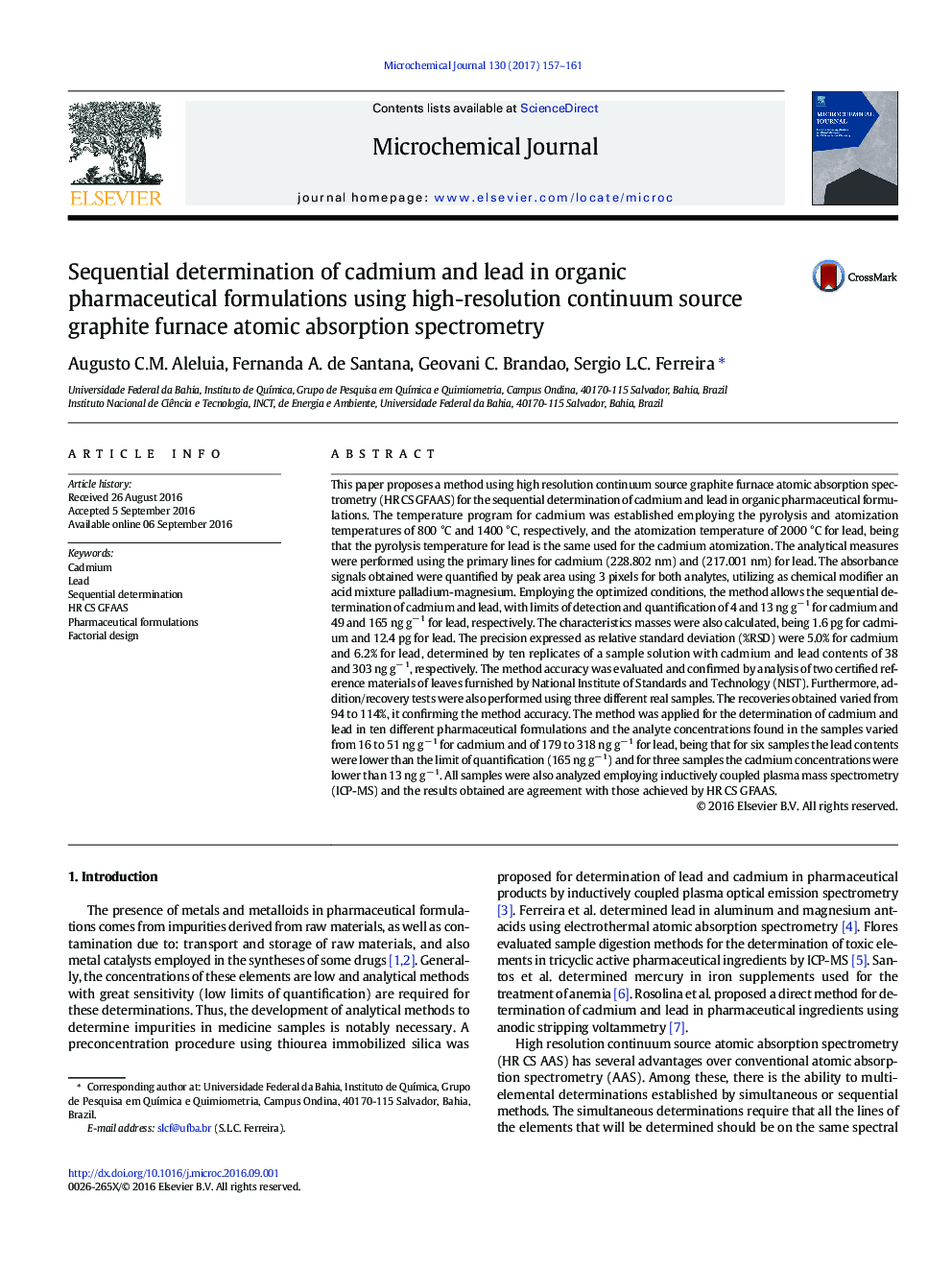| Article ID | Journal | Published Year | Pages | File Type |
|---|---|---|---|---|
| 7641097 | Microchemical Journal | 2017 | 5 Pages |
Abstract
This paper proposes a method using high resolution continuum source graphite furnace atomic absorption spectrometry (HR CS GFAAS) for the sequential determination of cadmium and lead in organic pharmaceutical formulations. The temperature program for cadmium was established employing the pyrolysis and atomization temperatures of 800 °C and 1400 °C, respectively, and the atomization temperature of 2000 °C for lead, being that the pyrolysis temperature for lead is the same used for the cadmium atomization. The analytical measures were performed using the primary lines for cadmium (228.802 nm) and (217.001 nm) for lead. The absorbance signals obtained were quantified by peak area using 3 pixels for both analytes, utilizing as chemical modifier an acid mixture palladium-magnesium. Employing the optimized conditions, the method allows the sequential determination of cadmium and lead, with limits of detection and quantification of 4 and 13 ng gâ 1 for cadmium and 49 and 165 ng gâ 1 for lead, respectively. The characteristics masses were also calculated, being 1.6 pg for cadmium and 12.4 pg for lead. The precision expressed as relative standard deviation (%RSD) were 5.0% for cadmium and 6.2% for lead, determined by ten replicates of a sample solution with cadmium and lead contents of 38 and 303 ng gâ 1, respectively. The method accuracy was evaluated and confirmed by analysis of two certified reference materials of leaves furnished by National Institute of Standards and Technology (NIST). Furthermore, addition/recovery tests were also performed using three different real samples. The recoveries obtained varied from 94 to 114%, it confirming the method accuracy. The method was applied for the determination of cadmium and lead in ten different pharmaceutical formulations and the analyte concentrations found in the samples varied from 16 to 51 ng gâ 1 for cadmium and of 179 to 318 ng gâ 1 for lead, being that for six samples the lead contents were lower than the limit of quantification (165 ng gâ 1) and for three samples the cadmium concentrations were lower than 13 ng gâ 1. All samples were also analyzed employing inductively coupled plasma mass spectrometry (ICP-MS) and the results obtained are agreement with those achieved by HR CS GFAAS.
Related Topics
Physical Sciences and Engineering
Chemistry
Analytical Chemistry
Authors
Augusto C.M. Aleluia, Fernanda A. de Santana, Geovani C. Brandao, Sergio L.C. Ferreira,
